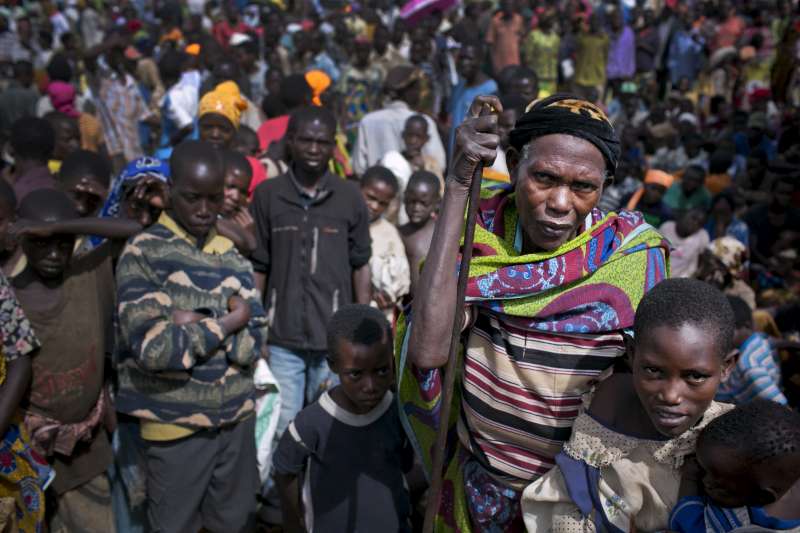Women and children were the main victims of this crime of genocide committed against the Hutu population. They were the main victims of violations of the right to life, to physical integrity and to safety.
In Rwanda, married women were raped in front of their husbands and at the same time and in the same place as their daughters, adults or minors. Many women have undergone butchering, belly cutting and mutilation of their genitals or breasts. Pregnant women were, more than others, targeted by this cruelty. Objects such as sticks or very sharp metals were pushed into the vagina and pushed through the intestines to the level of the chest, to pierce the body of these women from genitals to the head or neck. RPF executioners inflicted extreme suffering on their victims by savagely inserting in the genitals objects such as glass pieces, pestles coated with hot peppers, rifle barrels, etc. ( Ndahayo, E. & Dufatanye, A.-A., 2015. La violence politico-militaire contre les femmes au Rwanda – De Ndabaga à Ingabire. Editions Sources du Nil ed. Lille: Collection Pyramides)

Ndahayo & Dufatanye concluded that women were especially targeted because of their ability to give life and expand the group from which they came. The perpetrators were not unaware that what they were doing was going to have negative effects on reproduction within the group of victims. If the latter did not become directly infertile, the diseases they were infected with, or untreated infections that followed, would render them unfit to procreate.
United Nations Human Rights Office of the High Commissioner’s DRC Mapping Exercise Report listed incidents of women who were raped before being killed, e.g. in the course of the refugee massacres at Hombo in December 1996:
“From 9 December 1996, AFDL/APR soldiers shot dead several hundred refugees, including a large number of women and children at the Hombo bridge. Over the course of the following days, they burned alive an unknown number of refugees along the road in the town of Kampala, a few kilometres from Hombo. Many women were raped by the soldiers before they were killed. Before killing them, the soldiers had asked the victims to assemble so they could be repatriated to Rwanda.
Around 9 December, AFDL/APR soldiers intercepted and executed several hundred Rwandan refugees in the vicinity of the village of Chambucha, four kilometres from Hombo. The victims, who included a large number of women and children, were shot dead or killed by blows of hammers and hoes to the head near a bridge over the Lowa River. Before killing them, the AFDL/APR soldiers had promised the refugees that they would repatriate them to Rwanda with the aid of UNHCR. Most of the bodies were then dumped in the Lowa River.” ( OHCHR, 2010. Report of the Mapping Exercise Documenting the Most Serious Violations of Human Rights and International Humanitarian Law Committed Within the Territory of the Democratic Republic of the Congo Between March 1993 and June 2003, Geneva: Office of the United Nations High Commissioner for Human Rights (web version), p.100)
The report noted that women were also tortured and subjected to mutilation, particularly sexual, during these massacres.
Children alongside the adults were killed indiscriminately, sometimes in particularly cruel ways, with blows from hatchets or with their head smashed against a wall or tree trunk. Others were reported burned alive in their homes, along with their families (OHCHR, 2010, p.329).
UN Investigative Team of the Secretary-General reported the detention of malnourished children being treated in a hospital, killing of a number of wounded Rwandan Hutu refugees in hospitals by AFDL troops, such as in Luvungi village, South Kivu, and the beating and killing of nurses in those hospitals. (Investigative Team of the Secretary-General, 1998. Report of the Investigative Team of the Secretary-General on serious violations of human rights and international humanitarian law in the DRC, s.l.: United Nations Security Council) Par. 93
